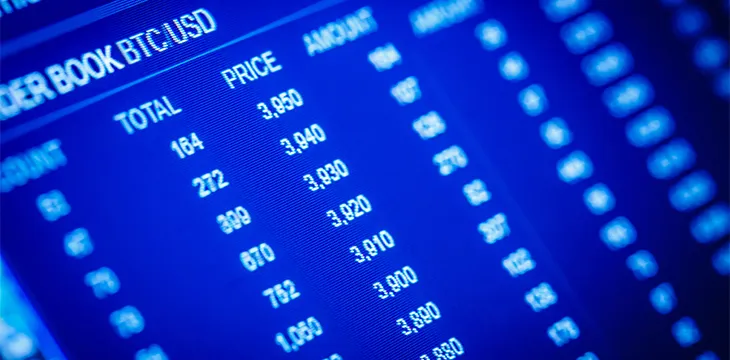|
Getting your Trinity Audio player ready...
|
MicroStrategy (NASDAQ: MSTR) executives have sold off nearly US$175 million in company stock over the past year, cashing in on a bull run in both company share and BTC prices. With BTC making up a significant share of MicroStrategy’s value, other investors may be left wondering if holding BTC is the company’s only remaining purpose.
Blockchain news site Protos reported that it had examined stock selloffs by MicroStrategy (NASDAQ: MSTR) executives over a 10-year period. CFO Phong Lee and CTO Timothy Lang sold US$55.8 million and $44.9 million in company stock, with six others making up the $175 million total. CEO Michael Saylor himself hasn’t sold any stock directly since 2012 but did move 50,000 MicroStrategy shares to another one of his companies, Alcantara LLC, in early 2021.
The report compared that to previous selloffs, saying the $175 million is part of a total US$270 million in stock selloffs by MicroStrategy employees since October 2012.
We mapped 10 years worth of stock sales at the hands of MicroStrategy executives. Nearly two-thirds of all dumps happened in the past year. https://t.co/RBp2GjaCam pic.twitter.com/VmhVQHdLv8
— Protos (@Protos) September 4, 2021
MicroStrategy’s market cap on Nasdaq is around US$7 billion, over $720 a share. Ostensibly a moderately-successful software and business data analytics provider, the company did little to gain general public attention until it began a massive $2.2 billion BTC buying campaign in 2020. Both the BTC price and MicroStrategy stock price have soared since. Given that its BTC holdings are worth about $5.5 billion today, the company’s wealth (and likely its stock value) is largely dependent on the current BTC price.
Saylor has insisted his company is still a serious software firm that “just happens to hold BTC in our treasury reserves,” and definitely not a Bitcoin ETF/ETP.
Was this a good strategy?
Saylor, a prominent BTC proponent since 2020, has praised the benefits of BTC using what he called the “old trope” of avoiding taxes on profits by claiming it was “lost in a boating accident” (this is a metaphor that pre-dates Bitcoin; it’s supposedly an evergreen claim by commodity metal holders attempting to hide their assets from the government). Saylor may not be entirely wrong with this claim, but bragging about it publicly as the CEO of a publicly traded company holding over 108,000 BTC is pretty reckless nonetheless.
Saylor has also stated that he never intends to actually sell his BTC, but keep it for a time when it’s the only kind of money people trust. Not bad for someone who once disparaged Bitcoin as a kind of passing fad.
#Bitcoin days are numbered. It seems like just a matter of time before it suffers the same fate as online gambling.
— Michael Saylor⚡️ (@saylor) December 19, 2013
Just over a year ago, when MicroStrategy began buying up BTC by the hundreds of millions of dollars, CoinGeek’s Patrick Thompson warned the company’s move was “unlikely to do its shareholders any justice and presents them with an unusually high amount of risk.”
There’s no doubt MicroStrategy’s BTC “investment” was a short-term success in 2021, at least on paper. The asset went from around US$10,000 in price per unit in October 2020 to almost $63,600 in April 2021, and at present is still just under the $50,000 mark. The same statistics are used by any BTC holder when presented with the argument that BSV is technologically superior to BTC, actually works for its intended purpose, and is in fact the only true Bitcoin.
But it didn’t make BTC any better
MicroStrategy’s big 108,991 BTC buy-up, along with that of Tesla’s (NASDAQ: TSLA) 43,200 BTC holdings, were likely the main driving factors behind that price rise. Although they raised awareness and demand, though, what they didn’t do was add anything to BTC’s utility.
It remains an asset useful mainly for holding in static wallets and selling to later investors at a higher price (if the price rises). Beyond that, it’s not used for much at all—after nearly 13 years, BTC hasn’t created a new global economy of merchants and customers accepting and spending BTC. Hodlers hang on to every piece of BTC they have in the hope it’ll have a higher price in the future. It has an on-chain transaction limit of around 4-7 per second for the entire network, and transactions are routinely expensive, and/or slow.
While the exchange market price for BTC may be just shy of $50,000, try offering it for most daily purchases in your life, and you’ll soon realize it has very little value at all. The BTC “economy” is based almost entirely on exchange trading and price speculation.
When a BTC user tells you it’s “the future of money,” ask if it could replace the global financial/banking system tomorrow, should national fiat currencies suddenly fail. The answer they don’t want to give you is: No. BTC is simply not up to the task of being the future of money. Not tomorrow, not next year, not ever.
No one could blame MicroStrategy’s execs for selling off millions in stock after such a great price run. But it could also be a sign they don’t see much value in the company’s future prospects, at least in its core business. With both BTC and MicroStrategy itself, the differences between “current price” and “actual value” become apparent. A few people make some quick profit, but everyone else is left wondering what all the fuss is really about.
Watch: CoinGeek Zurich presentation, How Bitcoin Will Change The Future of Data and Empower Everyone

 07-02-2025
07-02-2025 





